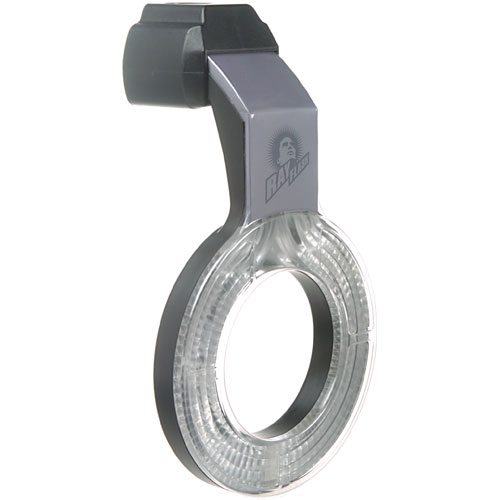Last Updated on 08/30/2011 by Sander-Martijn
We previously reviewed the Orbis, which was a terrific all-in-one ring flash and softbox. But now we’ve got our fondling fingers on the ExpoImaging Ray Flash. Though it has a much different design, the unit is still proving so far to be very capable in tests (which are still on-going at the time of writing this posting.)
What is a Ring Flash?
Originally developed for dentists needing to illuminate areas for…dental work…ring flashes were curved light tubes that went around the lens of a camera to evenly light dark area. However, photographers got a hold of the units and loved the effect. And so, the ring flash came into use.
Ring flashes are used often in portraiture, events, at weddings, in fashion, etc. Perhaps most notable is their uses in macro work.
Modern day ring flashes come in various different types. Canon for example has the MR-14EX TTL and the more powerful MT-24 EX. These units have a commander area that goes into the hot shoe of the camera with the lights going around the lens. The former only works with Macro lenses unfortunately. Nikon’s SU-800 also tends to be quite a bit more advanced with wireless control of the unit.
Then you’ve got the Orbis. The Orbis is literally a giant ring that utilizes your current flashes and turn them into a ring flash. The giant hole in the middle is for the photographer to place their lens into. Users can hand hold the flashes or use a bracket like pictured above. I’ve used both as the Canon 7Dhas wireless flash control. The Orbis can come by itself
or you can purchase the arm bracket
or get them together in a special package
(which you would probably prefer anyway.)
Now, you’ve got the Ray Flashwhich is different in different ways. It still modifies light from your speedlite and bends it into a ring shape. But it is designed for on-camera use. The Orbis needs to be used off-camera. That doesn’t mean that you can’t use the Ray Flash off-camera though: it makes a decent softbox. However, so far in the testing the Orbis has been seen as a better softbox because of the larger surface area it covers. Harken back to the rule that the larger the surface area is in relation to the subject, the softer your light will be.
With the Ray Flash, you only lose one stop of light. With the Orbis, you lose about two stops. Do whatever you’d like to with that information: sometimes I actually prefer two stops underpower if I’m using the unit as a softbox. But if I’m directly in front of my subject, I’m so far liking the one stop loss of light. To be fair, I find myself controlling the output of my flashes no matter what unit I’m using.
James, the creator of the Orbis, calls it the look of these units, “Million Dollar Ring Flash” look. And in all honesty, he’s right. The two companies have created some fantastic products.
How is the Ray Flash Used?
[youtube=https://www.youtube.com/watch?v=DMIoO_OW2OE]
That video will explain and show it all to you.
Early Quirks
There are some weird things about this flash modifier. For example, you need to buy the one that is specifically designed for your flash. While that isn’t a bad thing necessarily, it means that I had to request the Ray Flash for the 580 EX II from ExpoImaging (which I get to keep by the way, thank you guys!) But when I want to stick my 430 EX II in there, I need to put these little wedges in to secure it and then screw down this clamp on top. It’s a bit of a pain at times, but it’s bearable.
Also, the shape is a bit weird. However, I totally understand why it was created this way. There seems to have been a lot of ultrasonic welding in the construction of the unit, which makes it tough. Once again though, it’s a very weird shape.
More will come in future tests.
Please Support The Phoblographer
We love to bring you guys the latest and greatest news and gear related stuff. However, we can’t keep doing that unless we have your continued support. If you would like to purchase any of the items mentioned, please do so by clicking our links first and then purchasing the items as we then get a small portion of the sale to help run the website.


